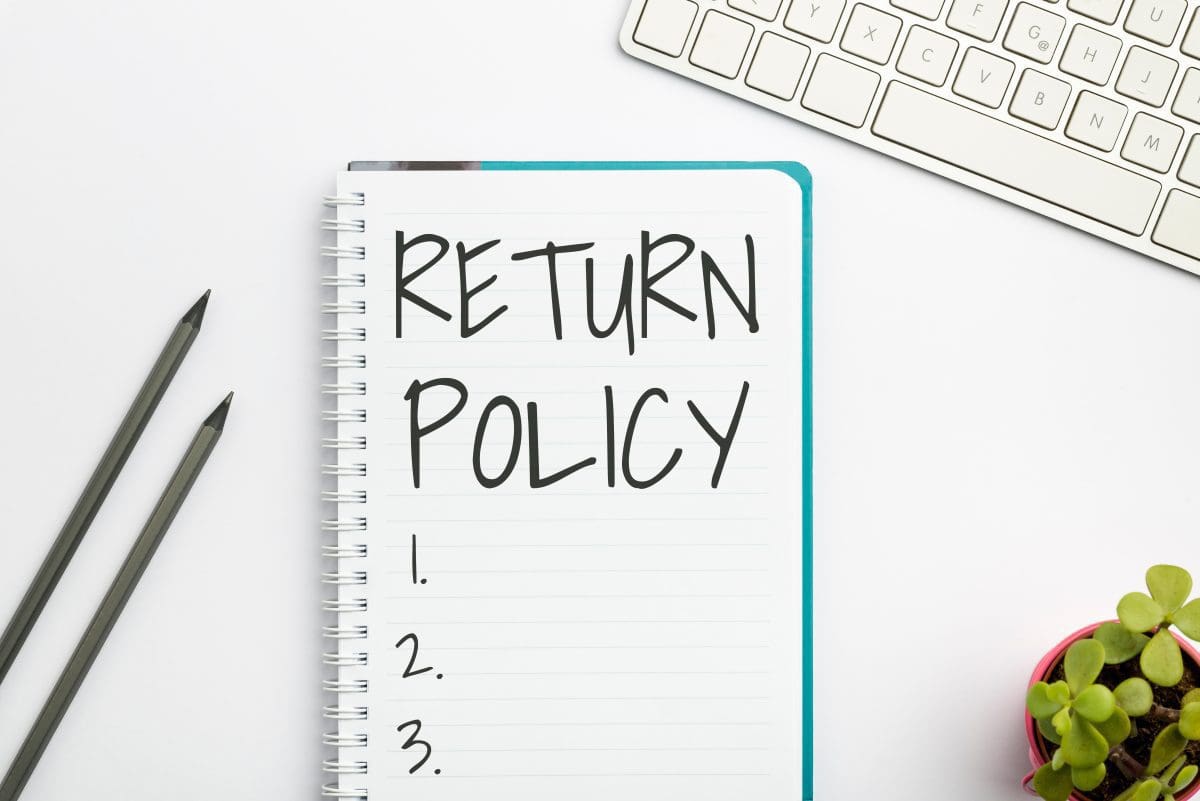
It is expected that customers will eventually return a purchased item. An excellent way to ensure customers have a good experience when returning an item is to have a clear and concise return policy. A straightforward policy gives customers a feeling of security and guarantees that the purchase is genuinely represented. According to recent studies, 92% of customers are likely to remain a customer if the return process is easy.
The Importance of a Return Policy
- Creates customer trust: A clear policy for returns creates a sense of security for customers.
- Improves sales and attracts customers: The easier it is to understand your policy, the more likely they are to purchase from the store.
- Handles the customer’s expectations: Prioritizing your customer’s expectations helps avoid any misunderstanding or miscommunication.
- Saves you and the customer time: Without a refund policy, customers will contact you frequently or walk away. This will cost your business and the customer crucial time.
- Indicates professionalism: Displaying your refund policy gives a positive sign to your customers regarding how you conduct business.
- Deals with fraudulent returns: In the absence of a return policy, it is difficult to manage and deal with fraudulent returns. It’s a great step against customers who are always looking to return an item.
What to Include in Your Return Policy and Why
A return policy needs to cover a few factors to help a customer understand the allowances and limits of your place of business.The policy must cater to the customer and protect the company from fraudulent returns.
What to include:
1. A Time Frame for Returns
A customer needs to understand how long they have before returning a product. Usually, 15 to 30 days is an ideal return policy, depending on the item. Avoid an open-ended return period, as it will probably not benefit your business.
2. Acceptable Conditions
Define the conditions a product needs to be in before a return is processed. Without this, customers may attempt to return items in poor condition to be resold. For example, Apple’s return policy states that items need to have all the documentation, packaging, accessories, and the purchase or gift receipt.
It is also important to indicate items that are non-returnable and non-exchangeable.
3. Steps for Returns
For a returned item to be processed, there needs to be specific key requirements which may include:
- Keeping the item in its original packaging
- Have the purchase receipt
- Retain purchase tags on the item
- Acquire an authorization number if necessary
- Use the correct shipping address
- Photo or other forms of authentication, if necessary
4. Refunds, In-store credit, or Exchanges
Often, return policies are coupled with exchange and refund policies which all need to be exhaustive and transparent. Customers have different expectations; some expect a full refund, others an exchange and others want in-store credit. Clearly state you offer customer credit and exchanges for certain returns and a full refund if the item meets specific requirements in the return policy.
What to Avoid in a Return Policy
Your policy should not be too technical. Every detail should be covered in a direct and informative manner. Avoid using specialized language and even poor formatting. It is also advisable to avoid any ambiguities when detailing the limitations.
Customize Your Return Policy
An effective return policy should be easy to understand, direct, and very concise. Also, ensure it is easy to find and clearly displayed on every website page. It should be honest, actionable, and match your brand’s voice.
Bottom Line
Managing a reverse logistics operation can be challenging and costly. At Elite EXTRA, our Returns Automation software is designed to simplify this process and automate the enforcement of your returns policy. Contact us today to learn more!







